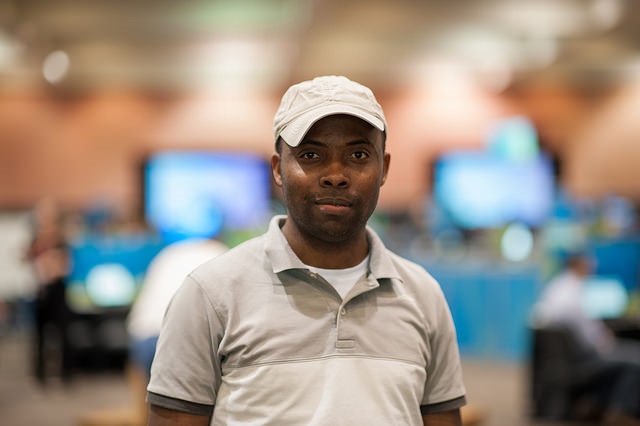Impressions from the 2015 Esri Developer Summit: Christopher Ilori
Christopher Ilori is a PhD candidate from the Department of Geography at Simon Fraser University who was selected by his school’s Centre of Excellence to attend the Esri Developer Summit in Palm Springs, CA. Christopher wrote this brief article about his experience at the Developer Summit.
I have a master’s degree in Natural Resources – Sustainable Environmental Management from the University of Greenwich, UK. I also have a postgraduate diploma in Geographical Information Science and a bachelor’s degree in Geography from the University of Nottingham, UK and Obafemi Awolowo University, Nigeria respectively. Prior to starting my master’s program, I worked as a research intern at the Institute for Global Environmental Strategies, Japan. My master’s dissertation was focused on species distribution using GIS and a model to predict the spatiotemporal distributions of some endemic bird species in the Upper Guinea forest (West Africa) under different climate scenarios. Upon completing my master’s degree, I worked as a GIS Technician for Ordnance Survey, Virgin Media Ltd, and QC Data Ltd (all in the UK). I am currently studying for a doctoral degree in Geography at Simon Fraser University, Canada. My current research is on using satellite remote sensing and radiative transfer models to derive water depth, water optical column properties and seafloor features in shallow water environments.

I’m pleased that I was selected by my ECCE director to attend the 2015 Esri Developer Summit in California. Being a young researcher, attending this event made it possible for me to expand my network base by meeting new people. It was value-added in that it provided me the opportunity to learn new technologies and view Esri’s GIS world through a new lens. Hearing the plenary talks and many dedicated technical sessions over the four days I attended the summit helped me learn about building applications for web and desktop environments and was a great experience. It got me thinking about how I could incorporate some of the new applications in my research for real time data collection and improved data collection through mobile-based technologies. With reference to my PhD research on satellite-derived bathymetric mapping, I have been exposed to different ways in which I can leverage the power of GIS and the Python programing language, combining new features in both ArcGIS Pro and ArcGIS 10.3 for modeling in a raster environment. Both my current and future research will benefit from best practices I learned for using the enhanced raster object, classes, functions, and NumPy arrays to extend analytical capabilities. I am sure that with this training, I will be able to solve challenging scientific problems by managing huge raster datasets with mosaic datasets.

Another benefit from attending the Developer Summit is that it provided an ideal platform to meet Esri’s workforce face to face and to share contact information for future communications to learn and familiarize myself with latest changes in ArcGIS. This is very important as I may not have the opportunity to be physically present in subsequent annual meetings. Besides learning, I also had the chance to ask questions and had one of them answered by the on-stage panel during the Q & A section on the last day of the summit. Getting such a down-to-earth answer would have otherwise been difficult, if not totally impossible, through e-mail exchanges.
I plan to continue to invest more time and money into learning and updating my programming skills, having been reminded once again that programming is the core skill of the 21st century.
